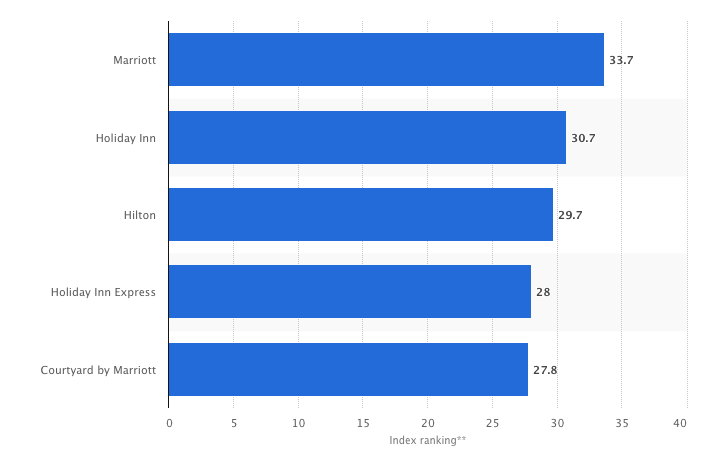People have identified time with money ever since the dawn of time (or at least since the dawn of the first notions of time and money). This is especially true if you’re dealing with marketing and sales. With so many different marketing approaches, it’s essential to choose the most efficient marketing model in terms of both time and money.
Did you know that Neil Patel increased lead capture by 500% using LeadQuizzes
This leads us to the STP marketing model. This model enables you to clearly identify your most valuable market segments and then sell to them successfully with carefully targeted products and marketing. Short-term, it may require extra time and effort, but long-term it’s one of the most effective marketing models nowadays.
We’re first going to define it and then we’ll show you how to apply it to your own business.
What is STP Marketing?
“STP” in STP marketing stands short for segmentation, targeting, and positioning.
It is one of the most effective and most commonly used marketing models of today. In fact, according to the Smart Insights poll, STP marketing is the 2nd most popular marketing model that has emerged in the last 100 years, right behind the 7 Ps of the marketing mix model.

How does STP marketing beat traditional marketing? It’s a logical consequence of the evolution of the entire market. In the past, marketing models revolved primarily around products. Recently, however, that focus has shifted from products to customers, which is exactly the main principle behind the STP marketing model – it’s customer-centric, rather than product-centric.
The STP marketing model is divided into 3 basic steps:
1. Segment your market
2. Target your ideal customers
3. Position your offer
Before we go into more details about each of the aspects of the STP marketing model and how you can apply those to your own marketing strategy, let’s make sure you understand the basic principle behind it.
No better way to do so than to offer an actual example of the principle in practice.
STP Marketing Example
Let’s take Marriott International, an American hospitality company, as an example. They own several different hotel chains, each of which targets a specific group of consumers.
So, they have the Courtyard by Marriott hotels, which focus on travelers on the road. There are the luxury Ritz-Carlton hotels for those who don’t mind spending an extra buck on premium service. If you’re a business professional, looking for a long-term, comfy place to stay, Marriott ExecuStay hotels are tailored to suit your needs.

And so on, you get the gist. What’s the point of such a diversification? Marriot International tailors their marketing efforts according to the needs of each specific group of customers – they don’t communicate the same message all of their customers.
And such an approach to marketing brings results. As can be seen in the graph below, Marriot is the highest-ranking hotel brand in the USA, ranked by the average index ranking in 2018.

What they are actually applying is the STP marketing model we defined above. So, we’re going to examine each of its 3 steps and show you how you can apply it to your own business, without being Marriot-rich.
The 3 Steps of STP Marketing
Step #1 – Segmentation
Sell more by selling to fewer. I believe this sentence best sums up the importance of segmentation in marketing.
Market segmentation is defined as “the process of dividing a broad market, normally consisting of existing and potential customers, into subsets of consumers (known as segments), that exhibit some type of shared characteristics.”
In simple terms, to segment a market means to divide your prospects into different groups, based on a common denominator. For example, you can segment your potential market by life stages into Millenials, Generation X, and baby boomers. Or you could divide them according to some common interest, for instance, into fans of horrors, comedies, and thrillers.
After you do so, it’s easy to target different segments of your market with custom ad campaigns. Such an approach to marketing (STP marketing model) certainly takes more time and effort but is definitely much more effective than the “one size fits all” approach.
Why is it important to segment? Well, segmenting your email lists into different groups, for example, has shown to increase open rates by 19% and click-through rates by 21%.
There are several different ways to segment your potential customers, but these 4 have proven to be the most significant and most effective for us.
4 Types of Market Segmentation
The four most commonly used types of segmentation are shown in the image below. Each has found its application in different areas of marketing but we’ll only briefly examine their main characteristics for now on.

1. Demographic segmentation – Segment your market by personal attributes such as age, gender, ethnicity, marital status, household, education, or profession.
2. Geographic segmentation – Segment your market by country, region, state, or city.
3. Psychographic segmentation – Segment your market by your potential customers’ personality, values, beliefs, or lifestyle.
4. Behavioral segmentation – Behavioral segmentation is the process of categorizing your potential and existing customers into smaller groups based on their purchasing behavior. It allows you to segment your market by how people use a product, their level of loyalty, or the benefits they are looking to get.
So, what’s the best and the easiest way to segment your market? Once again, two words – online quizzes.
How to Segment Your Potential Customers?
One of the most effective ways of segmenting your target audience is using a quality lead generation tool. But what kind of a lead generator works best?
While good lead generation tools enable you to collect emails and other basic information about your customers, the best lead generation tools, allow you to learn more about your potential customers and divide them into different categories based on their demographic, geographic, psychographic, and other information.
This leads us to online quizzes. Quizzes are an increasingly popular way to generate leads and segment them. They are fun, engaging, and once you create them with a specific goal in your mind, they can gather all the data you need from your customers, without being intrusive or intimidating.
Let’s take Rejuv Medical as an example. This health clinic has successfully segmented their potential patients using quizzes. Then they used the data obtained to pitch them an offer that perfectly matched their specific needs. What was the result? Using a single quiz, they managed to acquire 15 new patients and generate $18,000 in revenue!
Step #2 – Targeting
Once you’ve divided your audience into different segments, it’s time to target the most attractive segments with customized ad campaigns. In order to do select the best market segment to target, you need to make sure to evaluate the commercial potential of each of the segments. In order to do so, there are several factors to consider:
- Profitability. It all comes down to this, doesn’t it? You need to make sure the segment you’re targeting has enough potential to bring you profit. For example, targeting college students with an offer for a Ritz-Carlton presidential suite doesn’t make much sense.
Anyway, the bottom line is that the anticipated profits must exceed the costs of all your STP marketing efforts. - Size and growth potential. First of all, the market must be big enough to justify segmenting. There’s really no use in segmenting an already small market – it will just have an adverse effect on your business efforts. Secondly, you need to think about whether there’s potential for steady growth.
- Accessibility. You need to be able to communicate your marketing message across to the market segment you’re targeting. That being said, you need to consider any legal (remember GDPR?), social, or technological barriers that may prevent you from reaching out to your target audience.

Step #3 – Positioning
Positioning is how you present your brand or your products to different segments of your target market. The goal of effective positioning is to offer a specific market segment something bigger, better, stronger, or more valuable than what your competitors are offering.
Let’s take Apple as an example. Apple’s marketing strategy revolves around positioning themselves as an innovative provider of cutting-edge technology for customers looking for top-quality premium solutions.
In this last step of a typical STP marketing model, you need to figure out how you want to position your product to target the most attractive market segments that could bring you the largest profit. Here are a few tips:
1. Create an offer that will solve your target market segment’s problem. You need to examine the specific needs of each of your target market segments. Once you’ve identified potential obstacles or problems your target audience is facing, you need to show them how your product or service effectively solves their problem.
2. Clearly identify your unique selling proposition. Why should your customers purchase from you (and not from one of your competitors)? In order to answer this question, you need to fully understand how each segment of your target market perceives your product or brand and learn how to best position your offer. You can do so by interacting with your potential customers via social media or observing their mutual interactions.
3. Develop a segment-specific marketing campaign that presents your solution to your customers’ problems in a way they will appreciate. Make sure you present them with a compelling offer they won’t be able to refuse.
What are you waiting for? Now that you’ve learned the basics of STP marketing, start segmenting, targeting, and positioning!
Did you know that Neil Patel increased lead capture by 500% using LeadQuizzes